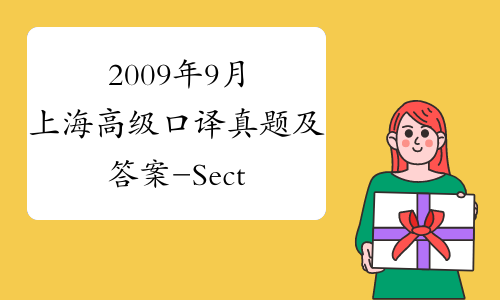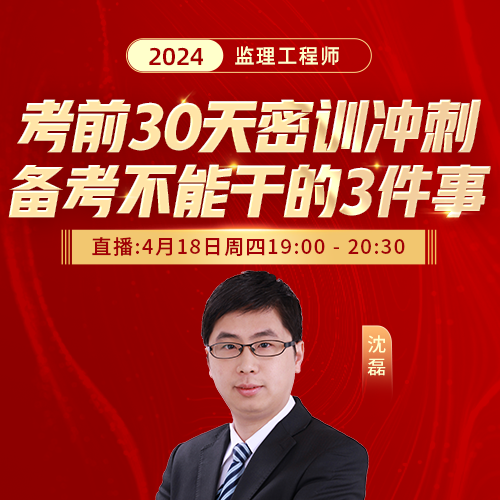2009年9月上海高级口译真题及答案-Section1-中华考试网
【摘要】 即将参加翻译考试的考生们,考试即将到来,你们的备考工作进行得如何了?考必过为大家精心整理了2009年9月上海高级口译真题及答案-Section1-中华考试网,希望能够帮助大家通过翻译考试。那么,同学们一起快来做题吧!关于2009年9月上海高级口译真题及答案-Section1-中华考试网的具体内容如下:

SECTION 1: LISTENING TEST (30 minutes)
In this part of the test, you will hear a passage and read the same passage with blanks in it. Fill in each of the blanks with the word or words you have heard on the tape. Write your answer in the corresponding space in your ANSWER BOOKLET. Remember you will hear the passage ONLY ONCE. Part A: Spot DictationFor more than two centuries, America!ˉs collegesand universities have been the backbone of the country's progress. They have educated the technical, _______ (1) work force and provided generation after generation of national leaders. Today, educators from around the country are apt to find many reasons for the _______ (2). But four historic acts stand out as watersheds:First, _______ (3): In 1862, Congress enacted the Land-Grant College Act, which essentially extended the opportunity of higher education to all Americans, including _______ (4). Each state was permitted to sell large tracts of federal land, and use the proceeds to endow at least _______ (5). Second, competition breeds success. Over the years, the _______ (6) of the America!ˉs colleges and universities have promoted _______ (7). Competitive pressure first arose during the Civil War when President Lincoln created _______ (8) to advise Congress on any subject of science and art. The Academy's impact really grew after World War when a landmark report _______ (9) the then president argued that it was the federal government!ˉ responsibility to _______ (10) for basic research. Instead of being centralized in government laboratories,_______ (11) in American universities and generated increasing investment. It also _______ (12) and helped spread scientific discoveries far and wide, _______ (13), medicine and society as a whole. Thirdly, _______ (14): The end of World War saw the passage of the Servicemen!ˉs Readjustment Act of 1944. The law, which provided for a college or vocational education _______ (15), made the higher-education system accessible in ways that _______ (16), opening the doors of best universities to men and women who had _______ (17). Finally, promoting diversity: The creation of federal______(18) as well as outright grants for college students brought much needed diversity to higher education and further_______ (19). Since its founding in 1965, the Federal Family Education Loan Program has funded more than 74 million student loans worth _______ (20).Part B: Listening Comprehension Directions: In this part of the test there will be some short talks and conversations. After each one, you will be asked some questions. The talks, conversations and questions will be spoken ONLY ONCE. Now listen carefully and choose the right answer to each question you have heard and write the letter of the answer you have chosen in the corresponding space in your ANSWER BOOKLET.1. ( A) She’s just a city girl and i used to the fast pace of the city. (B) She doesn't haveto drive everywhere to buy things. (C) She likes to garden and putter around in the house she bought. (D) She can go to a whole variety of places to interact with people.2. (A) Going to the country for a vacation makes no sense at all. (B) Renting a vacation house in the country is cheap. (C) People can enjoy the fresh air in the country. (D) People can relax better in the country than in the city.3. (A) The convenient transportation. (B) The interactive social life. (C) The whole car culture. (D) The nice neighborhood.4. (A) You may have fun making barbecues in the garden. (B) You won’t feel stuk and labeled as you do in the city. (C) It’s more tolrable than living in the city. (D) It’s more hatful than living in the country.5. (A) Quite lonely. (B) Very safe. (C) Not very convenient. (D) Not particularly dangerous. 6. (A) Because they might harm the poor people. (B) Because their drawbacks outweigh benefits. (C) Because they counterbalance other environmental policies.7. (A) German business confidence index has risen as much as expected recently. (B) The outlook for manufacturing is worsening in foreseeable future. (C) Global economic recession will sap demand for German exports next year. (D) German business situation is expected to get better in the next few months.8. (A) The proposal can cut greenhouse gas emissions from cars to a very low level. (B) This action is obviously going to change global temperatures in the long run. (C) The reduction in gas emissions is insignificant for addressing global warming. (D) The proposal represents a big step in solving the problem of global warming.9. (A) $ 60.5 a barrel. (B) $ 61 a barrel. (C) $ 61.32 a barrel. (D) $ 61.67 a barrel.10. (A) 92. (B) 250. (C) 1,500. (D) 2,500.11. (A) Microsoft. (B) Coca Cola. (C) IBM. (D) Nokia.12. (A) Amounts of revenue underlying the brands. (B) Strong franchise with consumers. (C) Whether or not the brand is a product of a tech company. (D) The degree of resonance consumers have with a brand proposition.13. (A) Because it is monopolistic. (B) Because it is competitive. (C) Because it takes its brand through generations. (D) Because its products fetch high prices.14. (A) The functionality of its product. (B) The emotional appeal of its product. (C) Its basic product being so different. (D) Its highly effective publicity.15. (A) A fantastic corporate culture. (B) A long company history. (C) An excellent product. (D) A sophisticated technology.16. (A) A power station. (B) An importer of bicycles. (C) An association of volunteers. (D) A charity organization.17. (A) To provide help to local villagers. (B) To export bicycles to developing countries.外语学习网 (C) To organize overseas trips. (D) To carry out land surveys.18. (A) They sell them at a very low price. (B) They charge half price. (C) They give them away for free. (D) They trade them for local products.19. (A) 14,000. (B) 46,000. (C) 50,000. (D) 56,000.20. (A) Donating bicycles. (B) Bringing in funds. (C) Taking part in bike rides. (D) Making suggestions about where to send bicycles.
以上就是考必过为大家整理的2009年9月上海高级口译真题及答案-Section1-中华考试网的具体内容。所谓未来,其实只是过去的堆砌,堆砌昨天便有了今天,堆砌今天便有了明天,堆砌明天便是未来。最后,考必过预祝大家在未来的翻译考试中能够取得优异的成绩!
最新文章
- 1 2021年8月CATTI备考阅读练习(8.9)
- 2 2021年8月CATTI备考阅读练习(8.10)
- 3 2021年8月CATTI备考阅读练习(8.11)
- 4 2021三级笔译CATTI练习:世卫组织总干事在国际奥委会上的主旨演讲(下)
- 5 2021三级笔译CATTI练习:世卫组织总干事在国际奥委会上的主旨演讲(上)
- 6 2021年英语三级笔译CATTI练习:王毅在中国—东盟建立对话关系30周年纪念研讨会开幕式上的致辞
- 7 2021年英语三级级笔译CATTI考试:传染病
- 8 2021年英语三级级笔译CATTI考试:数十年精准而持续的努力
- 9 2021年英语三级级笔译CATTI考试:抗疟药物
- 10 2021年英语三级级笔译CATTI考试:创新思维


